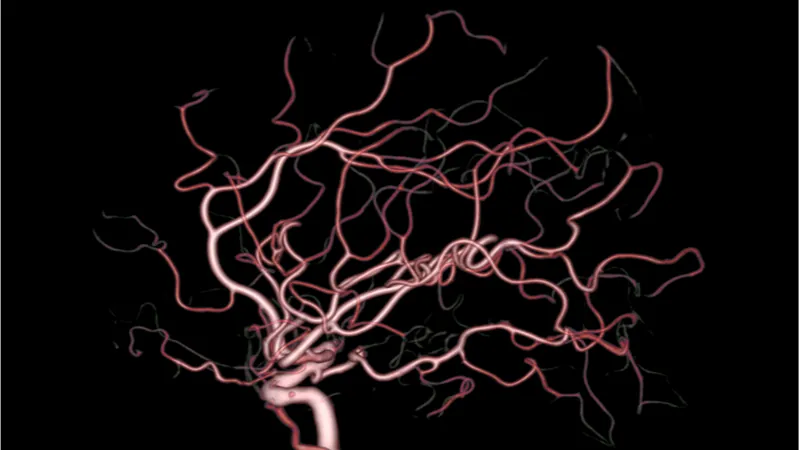A new study published in Mechanisms of Ageing and Development has found correlations between cardiovascular aging and a measure of epigenetic age acceleration [1].
Can epigenetic clocks predict cardiovascular disease?

Read More
One way researchers test the validity and usefulness of epigenetic clocks is to compare their outputs to other measures of biological aging, such as the occurrence of age-related diseases [2]. Cardiovascular disease is one of the largest causes of death around the world, and age is its primary risk factor. Despite this, research findings have been inconsistent when studying the relationships between measures of epigenetic age and cardiovascular disease. Many high-profile studies have reported a range of associations between the two, but others have shown no association at all [3].
Measuring epigenetic aging and cardiovascular disease
In this study, scientists from Charité Medical University in Berlin utilized the Berlin Aging Study II [4], which aims to explore factors that impact aging both positively and negatively. Its participants reside in Berlin, and the sub-group used in this study consisted of people between ages 60 and 84 (n=1671).
Participants degree of cardiovascular disease was measured by two common composite scores, the LS7 [5] and FRS [6].
An epigenetic clock that was modified from Vidal-Bralo [7] and uses only 7 CpG methylation sites [6] was used in this study. This clock is much simpler compared to the more popular Horvath (353 CpGs) and Hannum (71 CpGs) clocks.
For this study, the primary variable of interest from the epigenetic clock was epigenetic age acceleration. This is typically defined as the difference between biological age, as estimated by the epigenetic clock, and chronological age. However, the authors also accounted for leukocyte cell distribution (monocytes, lymphocytes, etc.) in addition to chronological age in this analysis. Previous studies have shown that this may be a key variable, as epigenetic measures are often made from leukocytes [8], including the dataset in this study.
LS7 and FRS are associated with epigenetic age acceleration
148 participants showed clinical signs of cardiovascular diseases, but many more showed a variety of risk factors, including high blood pressure, diabetes, high cholesterol, smoking, etc.
Epigenetic age acceleration was correlated with both LS7 and FRS for both men and women, with the absolute value of the correlation coefficient (r) ranging between 0.049 and 0.084. While this is considered a weak correlation, epigenetic age acceleration was more predictive than chronological age, which had a correlation coefficient of r = 0.007. When a linear regression model was applied, the association between epigenetic age acceleration and both LS7 and FRS was statistically significant (p<0.05).
Looking at individual components within both scores, physical activity was the most associated with epigenetic age acceleration for LS7 relative to diet, BMI, HbA1c, total cholesterol, smoking, and blood pressure. Similarly, for the FRS items, HDL cholesterol and total cholesterol were the primary drivers of its association with epigenetic age acceleration, with slightly less impact from chronological age, diabetes, systolic blood pressure, and smoking.
In conclusion, our results provide evidence of a weak association of the epigenetic clock (DNAm age acceleration) with cardiovascular health in the BASE-II cohort. We were able to confirm our initial hypothesis that more favorable results in the Life’s simple 7 (LS7) and the Framingham Risk Score (FRS) would be associated with a lower DNAm age acceleration. The DNAm age acceleration of participants with more favorable scores in the well-established instruments FRS and LS7 resulted to be lower compared to participants with less favorable score results. Moreover, we found our hypothesis that the LS7 may be associated more strongly with DNAm age acceleration than the FRS because it includes physical activity and diet at least partially confirmed. Physical activity resulted to be the driving force in the association between DNAm age acceleration and the Life’s simple 7. As expected, women displayed more favorable results in the CVH scores and had significantly lower epigenetic age acceleration than men. The above findings add to the growing body of evidence supporting the epigenetic clock´s potential as a biomarker of aging in the context of CVH and lifestyle factors.
Conclusion
This study is the first to compare LS7 and FRS with epigenetic age acceleration. Different study population datasets, epigenetic clocks, and measurements of cardiovascular disease have been examined in previous studies. While this study contributes to the muddled findings of previous work to a certain extent, it also suggests that some components of cardiovascular disease (such as physical activity, HDL cholesterol, and total cholesterol) may be more related to measures of epigenetic age acceleration than others. Epigenetic clocks are still relatively new to longevity research and will likely require many more studies such as this one to sort out their optimal parameters, which components of aging they are associated with, and why.
Literature
[1] Lemke, E. et al. Cardiovascular health is associated with the epigenetic clock in the Berlin Aging Study II (BASE-II). Mechanisms of Ageing and Development (2021). https://doi.org/10.1016/j.mad.2021.111616
[2] Ferrucci, L. et al. Measuring biological aging in humans: A quest. Aging Cell (2020). https://doi.org/10.1111/acel.13080
[3] Lind, L. et al. Methylation-based estimated biological age and cardiovascular disease. Eur J Clin Invest (2018). https://doi.org/10.1111/eci.12872
[4] Bertram, L. et al. Cohort profile: The Berlin Aging Study II (BASE-II). Int J Epidemiol (2014). https://doi.org/10.1093/ije/dyt018
[5] Konig, M. et al. Historical trends in modifiable indicators of cardiovascular health and self-rated health among older adults: Cohort differences over 20 years between the Berlin Aging Study (BASE) and the Berlin Aging Study II (BASE-II). PLoS One (2018). https://doi.org/10.1371/journal.pone.0191699
[6] D’Agostino, R.B. Sr. et al. General cardiovascular risk profile for use in primary care: the Framingham Heart Study. Circulation (2008). https://doi.org/10.1161/circulationaha.107.699579
[7] Vidal-Bralo, L., Y. Lopez-Golan, and A. Gonzalez. Corrigendum: Simplified Assay for Epigenetic Age Estimation in Whole Blood of Adults. Front Genet (2017). https://doi.org/10.3389/fgene.2017.00051
[8] Quach, A.L. et al. Epigenetic clock analysis of diet, exercise, education, and lifestyle factors. Aging (Albany NY) (2017). https://doi.org/10.18632/aging.101168





